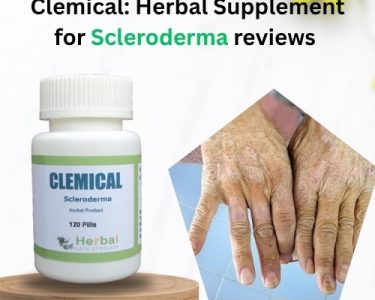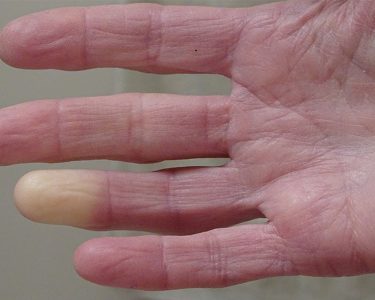Scleroderma is a chronic autoimmune disease that causes abnormal hardening and tightening of the skin and connective tissues. Although it is relatively rare, its impact can be severe, often involving internal organs such as the lungs, heart, kidneys, and digestive tract. For decades, researchers and clinicians have worked tirelessly to find effective therapies that can halt or reverse the progression of this condition.
But what is the newest treatment for scleroderma? And b plays a supportive role in managing symptoms?
This comprehensive guide explores the latest scientific breakthroughs, medical treatments, and holistic approaches that may offer new hope to those living with this complex autoimmune disease.
Understanding Scleroderma
Before we dive into the newest treatment options, it’s important to understand what scleroderma is and how it affects the body.
Scleroderma (from the Greek words “sclero” meaning hard and “derma” meaning skin) refers to a group of autoimmune diseases characterized by fibrosis (thickening and scarring) of the skin and connective tissues.
There are two main types:
- Localized scleroderma: Affects mainly the skin, often causing patches of hardened skin.
- Systemic sclerosis (systemic scleroderma): Affects internal organs in addition to the skin, leading to more severe complications.
The immune system mistakenly attacks the body’s connective tissue, leading to excessive production of collagen. Over time, this buildup of collagen can interfere with normal bodily functions, including circulation, lung function, and digestion.
The Challenge in Treating Scleroderma
Unlike some autoimmune diseases, scleroderma does not have a one-size-fits-all treatment. Because it affects multiple systems in the body, its management requires a personalized, multidisciplinary approach.
For years, doctors primarily focused on symptom management reducing inflammation, improving blood flow, and preventing complications. However, recent research has shifted toward targeted therapies that address the underlying causes of fibrosis and immune dysfunction.
So, what are the newest treatments for scleroderma today? Let’s explore the latest developments in medical science.
Related article: Clemical: Best Herbal Supplement for Scleroderma reviews
Newest Treatment for Scleroderma: Modern Medical Advances
1. Autologous Stem Cell Transplantation (HSCT)
One of the most promising breakthroughs in recent years for severe systemic scleroderma is autologous hematopoietic stem cell transplantation (HSCT).
This procedure involves using the patient’s own stem cells to “reset” the immune system. The process typically includes:
- Harvesting stem cells from the patient’s bone marrow.
- Using chemotherapy or immunosuppressants to eliminate the malfunctioning immune cells.
- Reinfusing the healthy stem cells to rebuild the immune system.
Clinical trials such as the SCOT trial (Scleroderma: Cyclophosphamide or Transplantation) have shown that HSCT can significantly improve survival rates, skin scores, and lung function in patients with diffuse cutaneous systemic sclerosis.
While HSCT carries risks—especially related to infection and chemotherapy toxicity—it has emerged as one of the newest treatment options for scleroderma offering long-term remission for select patients.
2. Targeted Biological Therapies
Biologic drugs are at the forefront of autoimmune disease treatment. These medications target specific molecules in the immune system responsible for inflammation and fibrosis.
Some of the most studied biologics for scleroderma include:
- Tocilizumab (Actemra):
This IL-6 receptor blocker has shown promise in improving lung function and skin thickening in scleroderma patients. The faSScinate and focuSSced trials found that tocilizumab may slow the decline in forced vital capacity (FVC), a key measure of lung health. - Rituximab (Rituxan):
Originally used for rheumatoid arthritis and lymphoma, rituximab targets B-cells—key players in autoimmune responses. Several small studies suggest it may improve skin fibrosis and reduce inflammation in systemic sclerosis. - Abatacept (Orencia):
This biologic interferes with T-cell activation, another immune pathway implicated in scleroderma. Early research indicates it may benefit joint involvement and fatigue.
These new biological therapies represent a targeted and personalized approach, minimizing the systemic side effects of traditional immunosuppressants.
3. Anti-Fibrotic Agents
Because excessive collagen production lies at the core of scleroderma, scientists are developing drugs that directly inhibit fibrosis.
- Nintedanib (Ofev):
Initially approved for idiopathic pulmonary fibrosis, nintedanib became one of the newest FDA-approved treatments for scleroderma-related interstitial lung disease (SSc-ILD). It slows the decline in lung function by blocking multiple growth factor receptors involved in fibrotic processes. - Pirfenidone:
Another anti-fibrotic drug, pirfenidone, is being studied for its ability to reduce lung scarring and improve oxygen exchange.
Together, these drugs mark a new era of disease-modifying therapies, moving beyond symptom control to addressing the root mechanisms of tissue damage.
Related article: Scleroderma: Diagnosis, Treatment, and Care
4. Vasodilator and Vascular Therapies
Scleroderma often causes Raynaud’s phenomenon (reduced blood flow to fingers and toes) and digital ulcers. Newer treatments focus on improving vascular health and preventing tissue loss.
- Bosentan (Tracleer): An endothelin receptor antagonist that reduces new digital ulcers.
- Sildenafil (Viagra) and Tadalafil (Cialis): Phosphodiesterase-5 inhibitors that improve blood flow and are also beneficial for pulmonary hypertension.
- Prostacyclin analogs (e.g., Iloprost): Used intravenously or via inhalation to dilate blood vessels and enhance circulation.
These medications not only alleviate pain and ulcers but also protect tissues from irreversible damage caused by poor blood supply.
5. Immunomodulators and Combination Therapies
Traditional immunosuppressants remain crucial for managing scleroderma. However, new studies are exploring combination therapies to enhance their effects.
- Mycophenolate mofetil (MMF): Shown to improve skin and lung symptoms with fewer side effects than cyclophosphamide.
- Methotrexate: Often used for early diffuse cutaneous involvement.
- Cyclophosphamide: Effective but with notable toxicity; now used more selectively or in combination with biologics.
Combination approaches such as MMF with biologic agents like tocilizumab or rituximab are gaining attention as potential future standards for managing this disease.
The Role of Regenerative Medicine and Gene Therapy
Looking ahead, regenerative and genetic approaches may revolutionize the treatment landscape.
- Mesenchymal Stem Cell Therapy: Unlike HSCT, this therapy uses multipotent stem cells that have anti-inflammatory and anti-fibrotic effects without requiring high-dose chemotherapy.
- CRISPR and Gene Editing: Experimental studies are exploring whether editing genes related to collagen synthesis or immune signaling could correct the underlying mechanisms of scleroderma.
Though these are still in early research stages, they represent the cutting edge of the newest treatments for scleroderma.
Lifestyle and Natural Remedies for Scleroderma
While medical advances are vital, natural remedies for scleroderma can also play a supportive role in managing symptoms, improving quality of life, and reducing inflammation.
Let’s explore evidence-based holistic strategies that complement medical care.
1. Diet and Nutrition
A balanced, anti-inflammatory diet can help manage inflammation and support organ function.
Key dietary recommendations include:
- Omega-3 fatty acids: Found in fish oil, flaxseed, and walnuts; they help reduce inflammation.
- Antioxidant-rich foods: Berries, leafy greens, turmeric, and ginger combat oxidative stress.
- Avoid processed foods and refined sugars: These can trigger inflammation and worsen autoimmune symptoms.
- Adequate hydration: Keeps skin and tissues supple, helping combat dryness and tightness.
Some studies suggest that a Mediterranean-style diet rich in vegetables, olive oil, and whole grains can benefit those with autoimmune conditions, including scleroderma.
- Herbal and Natural Supplements
Several herbs have been traditionally used to support immune balance and circulation. However, always consult a healthcare professional before starting any supplement.
- Turmeric (Curcumin): Known for its anti-inflammatory and anti-fibrotic effects.
- Ginkgo Biloba: Enhances circulation and may help with Raynaud’s phenomenon.
- Gotu Kola: Promotes collagen balance and skin healing.
- Green Tea Extract: Contains antioxidants that may help reduce oxidative stress.
These natural remedies for scleroderma are cures but may enhance comfort and slow the progression of symptoms when used responsibly.
3. Physical Therapy and Gentle Exercise
Physical therapy helps maintain flexibility and circulation.
- Stretching and range-of-motion exercises: Prevent stiffness and contractures.
- Swimming or water aerobics: Gentle on joints and muscles.
- Yoga and deep breathing: Support lung capacity and relaxation.
Consistency is key—daily gentle movement can significantly reduce discomfort and improve mobility.
4. Stress Reduction and Mind-Body Therapies
Because scleroderma is influenced by immune and inflammatory pathways, stress management plays a vital role in treatment.
Natural stress-relief methods include:
- Meditation and mindfulness to calm immune overactivity.
- Acupuncture to improve circulation and pain control.
- Massage therapy for relaxation and better blood flow.
These techniques can reduce the psychological burden of chronic illness and promote overall wellness.
5. Skin Care and Home Remedies
Skin tightening and dryness are hallmark symptoms of scleroderma. Gentle daily care helps maintain comfort:
- Moisturize frequently: Use natural oils like coconut, jojoba, or shea butter.
- Avoid hot water: It can worsen dryness and irritation.
- Protect from cold exposure: Especially for Raynaud’s; wear gloves and warm clothing.
- Humidifiers: Help keep indoor air moist and prevent skin cracking.
Simple self-care steps can make a noticeable difference in skin health and flexibility.
Integrative Approach: Combining Modern Medicine and Natural Remedies
The best outcomes for scleroderma often come from a combination of medical and natural treatments.
Here’s how these can complement each other:
| Modern Treatment | Complementary Natural Approach |
| Immunosuppressants and biologics | Anti-inflammatory diet and turmeric |
| Vasodilator therapy | Ginkgo biloba and heat therapy |
| Anti-fibrotic medications | Gentle massage and collagen-balancing herbs |
| Stem cell therapy | Stress reduction and immune-boosting nutrition |
Working with a rheumatologist, nutritionist, and holistic practitioner can create a balanced plan that addresses both the root cause and daily challenges of scleroderma.
Related article: Best Diet Plan for Patients of Scleroderma
Hope for the Future
The outlook for scleroderma patients is improving every year thanks to advanced research and personalized medicine.
Emerging studies in immune reprogramming, stem cell biology, and anti-fibrotic drug development continue to expand treatment possibilities.
Patients now have access to more targeted and effective therapies than ever before, with improved survival rates and quality of life. While a complete cure remains elusive, the rapid pace of discovery gives genuine hope.
Conclusion
So, what is the newest treatment for scleroderma?
From stem cell transplantation and biologic therapies like tocilizumab and rituximab to anti-fibrotic drugs such as nintedanib, modern science is offering unprecedented tools to manage this complex condition.
At the same time, natural remedies for scleroderma, including a nutrient-rich diet, herbal supplements, gentle exercise, and stress management, can support overall health and complement medical therapy.
The key lies in an integrative approach, combining cutting-edge medicine with holistic wellness practices tailored to each individual’s needs.
With continued research and personalized care, people living with scleroderma can look forward to better management, improved comfort, and renewed hope for the future.




